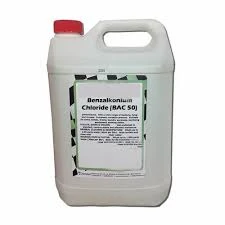coagulation and flocculation
Coagulation and Flocculation Principles and Applications
Coagulation and flocculation are two fundamental processes widely used in water treatment, wastewater management, and various industrial processes. These techniques help in the removal of suspended solids and colloidal particles from liquids, ultimately ensuring that the water is clean and safe for consumption or discharge. Understanding the principles behind these processes is crucial for professionals in environmental engineering, public health, and water resource management.
The Coagulation Process
Coagulation is the first step in the treatment of water that includes the destabilization of suspended particles. Natural waters often contain various contaminants, including silt, clay, organic matter, and microorganisms, which are typically negatively charged. When these particles are suspended in water, they repel each other due to their like charges, making it difficult for them to combine and settle.
The coagulation process begins by adding coagulants—chemicals that neutralize the charges of the suspended particles. Common coagulants include aluminum sulfate (alum), ferric chloride, and polyaluminum chloride. When these coagulants are introduced into the water, they dissociate and release positive ions. These positive ions neutralize the negative charges on the particles, allowing them to come closer together.
The Flocculation Process
Once coagulation has taken place, the next step is flocculation. Flocculation involves the gentle mixing of the water to encourage the agglomeration of the destabilized particles into larger clusters known as flocs. This process usually occurs in a designated flocculation tank, where slow stirring allows the smaller particles to collide and bind together, forming larger aggregates.
The formation of flocs is essential as it increases the settling rate of the particles when the water is subsequently subjected to sedimentation. Larger flocs settle more quickly than smaller particles, facilitating the removal of contaminants from the water. The efficiency of floc formation can be influenced by various factors, including the type and dosage of coagulant used, the pH of the water, temperature, and mixing conditions.
coagulation and flocculation

Applications in Water Treatment
Coagulation and flocculation are critical stages in the treatment of drinking water. These processes help to remove not only suspended solids but also pathogens and organic materials that could pose health risks. Modern water treatment plants frequently employ these techniques to ensure that water meets various safety standards set by regulatory bodies.
In addition to drinking water treatment, coagulation and flocculation are also employed in wastewater treatment processes. These techniques help to clarify effluents before they are discharged into the environment or reused in various applications. By removing pollutants and solids, these processes play a significant role in protecting natural water bodies from contamination.
Innovations and Challenges
While coagulation and flocculation have been widely utilized for decades, ongoing research aims to enhance their efficiency and reduce associated costs. Innovations such as the use of biodegradable coagulants and advanced mixing technologies are being explored. Additionally, there is a focus on developing automated systems that can better monitor and control the coagulation and flocculation processes, leading to improved treatment outcomes.
However, challenges remain, particularly concerning the environmental impacts of coagulants. The residuals from chemical coagulation can lead to additional waste that must be managed, and concerns about the long-term effects of residual chemicals on ecosystems are growing. As such, thorough research and careful management practices are imperative to mitigate negative impacts.
Conclusion
Coagulation and flocculation are crucial processes in water and wastewater treatment, ensuring that contaminants are effectively removed before water is distributed or discharged. As technology advances and environmental standards become more stringent, the importance of these processes will only increase. By continuing to innovate and address challenges, professionals in the field can ensure that these essential techniques remain effective and sustainable for future generations.
-
Water Treatment with Flocculant Water TreatmentNewsJun.12,2025
-
Polymaleic AnhydrideNewsJun.12,2025
-
Polyaspartic AcidNewsJun.12,2025
-
Enhance Industrial Processes with IsothiazolinonesNewsJun.12,2025
-
Enhance Industrial Processes with PBTCA SolutionsNewsJun.12,2025
-
Dodecyldimethylbenzylammonium Chloride SolutionsNewsJun.12,2025





